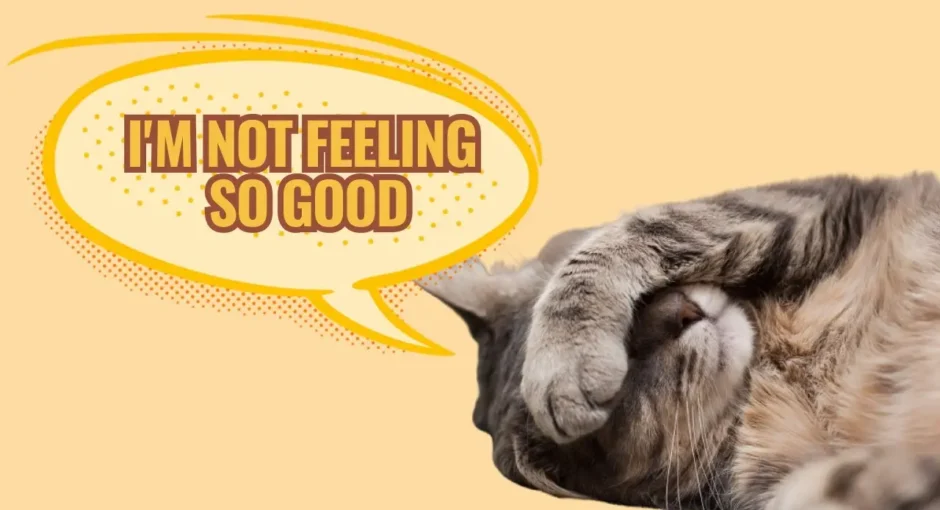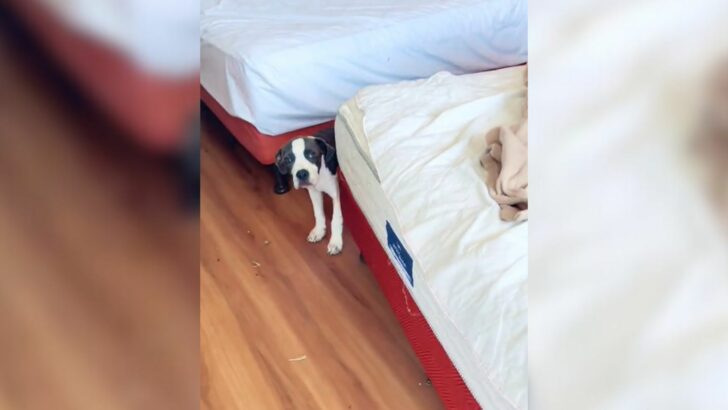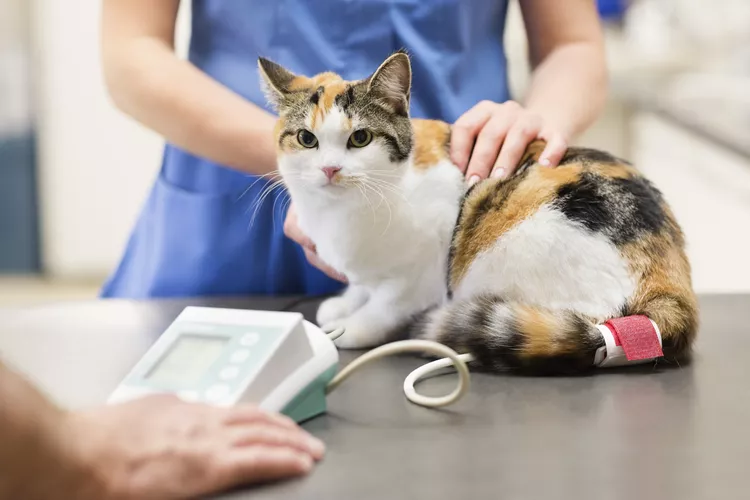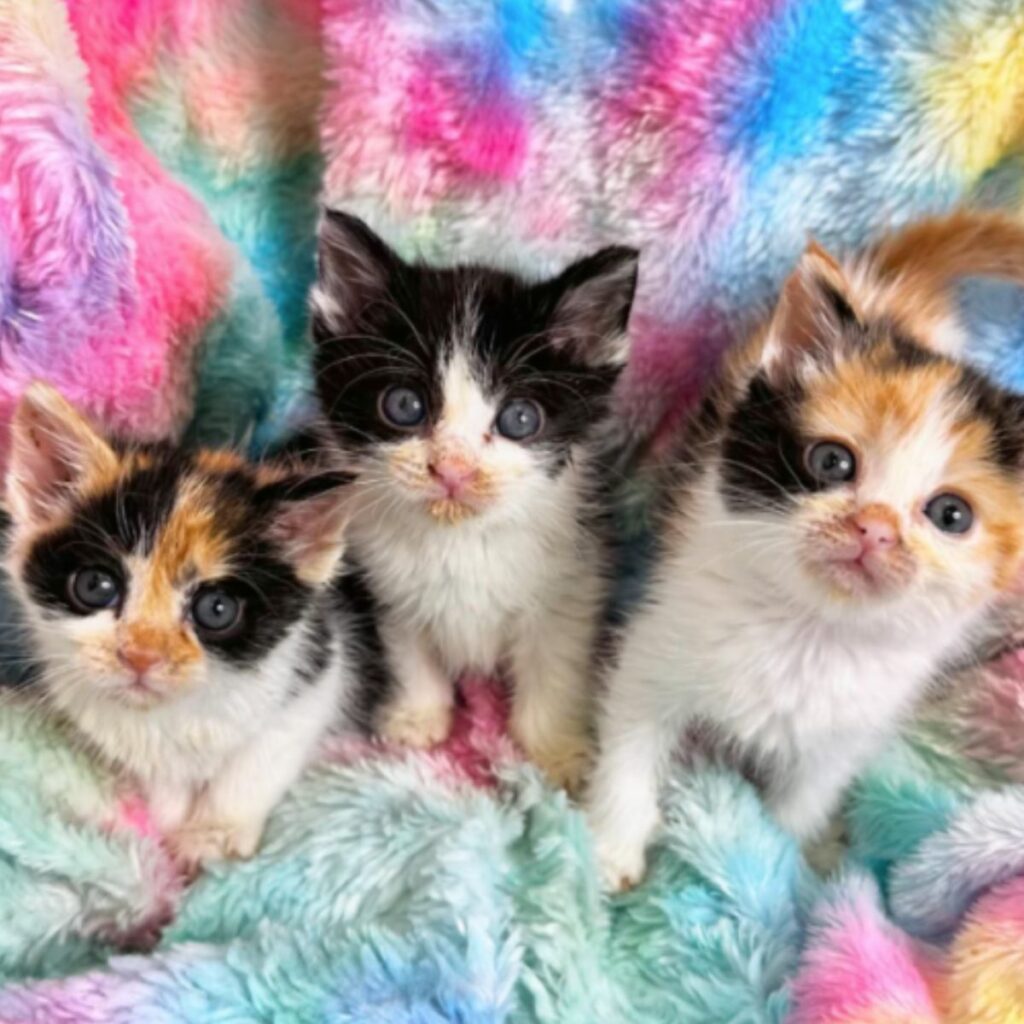I’ve noticed that many cat owners, including myself, often miss subtle signs that our cat companions might be in pain.
It’s easy to overlook changes in their daily habits because they can be quite subtle.
For instance, have you ever seen your cat eating less or grooming differently?
These small shifts could be telling you something important.
But it’s not just about appetite or grooming; behavioral changes, unusual vocalizations, and even how they move can all be red flags.
I’ve compiled a list of seven key signs to watch out for—each one essential for understanding your cat‘s health.
Read more: Why Did My Cat Stop Sleeping With Me? Tips To Rekindle The Cuddle
Changes In Appetite
Often, when a cat is in pain, you’ll notice changes in their appetite.
If your usually ravenous cat suddenly becomes disinterested in food, it might be a sign something’s wrong.
Cats are typically creatures of habit, especially when it comes to their meals.
A decrease in appetite can indicate that eating has become painful or uncomfortable, possibly due to dental issues, gastrointestinal problems, or other internal pain.
Conversely, some cats might start eating more than usual.
This could be a coping mechanism, as eating might temporarily distract them from their discomfort.
It’s important to observe any sudden changes in your cat‘s eating habits, whether they’re eating less or more.
I always make sure to note any deviations from my cat‘s normal eating patterns.
If I see a consistent change, I consult the vet to rule out any underlying issues. Regularly monitoring their food intake can help catch potential health problems early.
Don’t ignore these signs.
Cats are masters at hiding pain, so subtle changes in appetite can be important indicators. Keeping a close eye on their eating habits ensures they stay healthy and happy.
Read more: Can Fleas Actually Kill A Cat?
Altered Grooming Habits
Another sign your cat might be in pain is if they start showing altered grooming habits.
Cats are known for their meticulous grooming routines, so any significant changes can be a red flag.
If your cat suddenly stops grooming itself, it could indicate that certain movements are causing discomfort or pain. For example, arthritis or dental issues might make grooming difficult or painful.
Conversely, if your cat starts over-grooming, this can also be a sign of pain or discomfort.
Cats may lick or chew at a specific area excessively if it’s causing them pain.
This over-grooming can lead to bald spots or irritated skin, which are clear indicators that something’s not right.
Pay attention to the condition of your cat‘s fur as well.
If their coat looks unkempt or greasy, it could mean they’re not grooming as effectively as they used to, possibly due to pain.
Regular grooming is a natural behavior for cats, and any deviation from their usual habits shouldn’t be ignored.
Behavioral Shifts
When a cat‘s behavior changes suddenly, it might be a sign they’re in pain.
I’ve noticed that when my usually playful and energetic cat becomes withdrawn or hides more than usual, it’s often because they’re experiencing discomfort.
Cats are masters at masking pain, so spotting these subtle shifts in behavior is essential.
Another behavioral shift to watch for is increased aggression.
If your cat, who’s typically friendly and calm, starts his hissing, swatting, or biting, it might be their way of telling you something’s wrong.
Pain can make even the gentlest cat feel threatened or defensive, leading to unexpected outbursts.
Changes in appetite are also significant indicators.
A cat in pain might eat less or even stop eating altogether.
Conversely, some cats might overeat as a coping mechanism. Paying attention to their eating habits can provide valuable clues about their well-being.
Restlessness or difficulty finding a comfortable position is another key sign.
If they seem unable to settle down, pacing, or frequently changing spots, it could be because they’re struggling with discomfort.
These behavioral shifts, while sometimes subtle, are important signals that should prompt further investigation and, if needed, a visit to the vet.
Read more: 15 Great Gift Ideas For Cat Lovers
Unusual Vocalizations
Your cat‘s unusual vocalizations can be one of the most telling signs they’re in pain. Cats are typically quiet creatures, so when they start making noises out of the ordinary, it’s important to pay attention.
If your cat begins to meow more frequently, or their meows sound different—perhaps louder, more insistent, or even lower-pitched—it could indicate discomfort or pain.
Listen for other sounds, too. Growling, hissing, or even purring at unusual times can be red flags. While purring is often associated with contentment, some cats purr when they’re in pain as a self-soothing mechanism.
If your typically quiet cat suddenly starts vocalizing during activities like jumping, eating, or using the litter box, it might be a sign that those actions are causing pain.
Observe the context of these vocalizations. Are they happening during specific movements or when you touch a particular area?
When your cat‘s noises seem out of character, it’s a good idea to consult your veterinarian. They can help identify any underlying issues and provide relief for your beloved pet.
Lethargy Or Restlessness
Have you noticed your cat acting unusually lethargic or restless lately? These shifts in behavior can be strong indicators that your furry pal might be in pain. When a normally energetic cat suddenly seems to lack interest in activities they once enjoyed, such as playing or exploring, it’s a clear sign something’s not right.
On the flip side, if your cat, who typically enjoys lounging, starts pacing or seems unable to find a comfortable spot, this restlessness can also signal discomfort.
Cats are masters at hiding pain, so these behavioral changes shouldn’t be ignored. Lethargy might manifest as prolonged sleeping, a general lack of enthusiasm, or a refusal to engage with their environment. Restlessness could be seen in constant movement, frequent changes in position, or even vocalizing more as they try to communicate their distress.
It’s important to observe these patterns over a few days. If they persist, it’s time to consult your veterinarian. They can help pinpoint the cause and provide relief for your furry buddy.
Monitoring your cat‘s energy levels and behavior closely can make all the difference in ensuring they remain healthy and comfortable.
Physical Sensitivity
Observing how your cat responds to touch can be an important indicator of physical sensitivity and underlying pain.
If your usually affectionate cat suddenly recoils, hisses, or growls when you pet them in certain areas, it might be a sign they’re experiencing discomfort or pain.
Pay close attention to specific spots like their abdomen, back, or joints.
Cats often hide their pain, so subtle changes in their reactions can be crucial clues.
Another thing to watch for is if your cat starts avoiding being picked up or handled. I noticed this with my own cat; she used to love being cradled but began to resist and squirm away.
This change in behavior can signal that something’s not right physically.
Additionally, excessive grooming or licking of a particular area can indicate that it’s causing them discomfort.
It’s also helpful to observe their body language.
A cat in pain might have a hunched posture, flattened ears, or a tucked-in tail.
You might even see them favoring one side of their body.
Recognizing these signs early can make a big difference in addressing their pain promptly and getting them the help they need.
Read more: 10 Little-Known Facts About Your Cat’s Tongue
Mobility Issues
Watching my cat struggle to jump onto her favorite perch was the first sign something was wrong with her mobility.
Normally, she’d effortlessly leap onto the windowsill to bask in the sun, but now she hesitated and seemed unsure.
This change in behavior made me realize she might be in pain.
Cats are masters at hiding discomfort, so mobility issues can be subtle.
If your cat starts having trouble climbing stairs, jumping onto furniture, or even walking, it could indicate pain in her joints or muscles.
These signs might also be accompanied by a change in gait, such as limping or stiffness.
I noticed my cat was more hesitant to move around and spent more time lying down. She avoided her usual play activities and seemed less interested in exploring.
Reduced mobility can also lead to changes in grooming habits, as reaching certain areas becomes painful.
If you observe these signs, consulting a veterinarian is crucial.
They can diagnose the underlying issue, which might range from arthritis to injuries or other health conditions.
Early intervention can greatly improve your cat‘s quality of life, ensuring she remains comfortable and active.
Read more: Research Suggests Cats Possess Healing Powers
Conclusion
To sum up, keeping an eye on your cat‘s appetite, grooming, behavior, vocalizations, energy levels, sensitivity, and mobility can help you spot signs of pain early.
If you notice any changes, don’t hesitate to consult your veterinarian. By acting promptly, you can guarantee your cat gets the care they need, improving their comfort and quality of life.
Remember, being observant and proactive makes a big difference in your cat‘s well-being.







